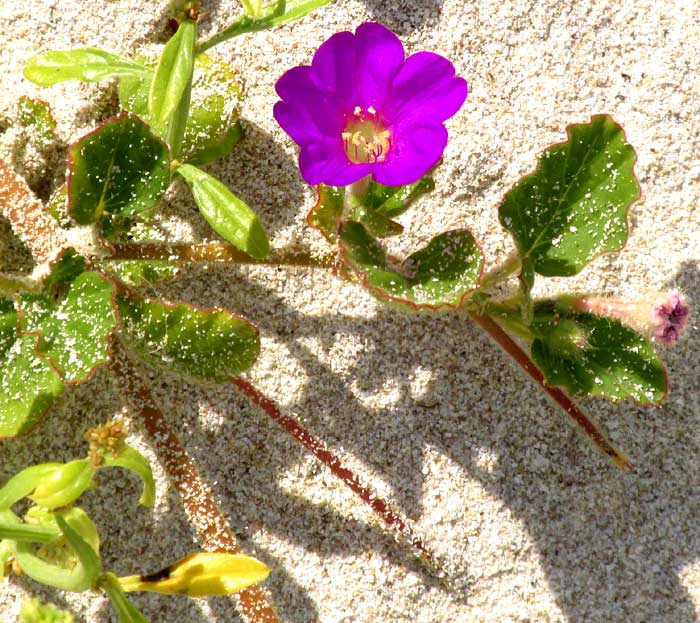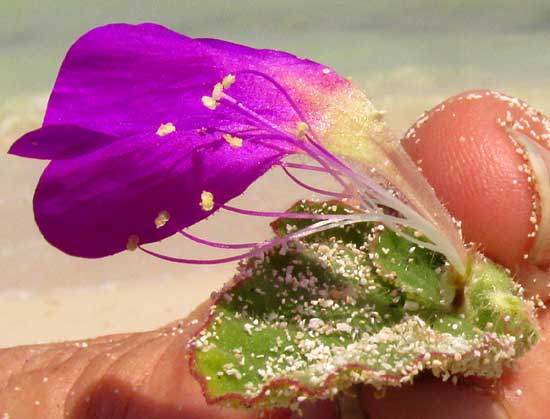Excerpts from Jim Conrad's
Naturalist Newsletter
from the September 22, 2018 Newsletter issued from Rancho Regenesis in the woods ±4kms west of Ek Balam Ruins; elevation ~40m (~130 ft), N~20.876°, W~88.170°; central Yucatán, MÉXICO
BEACH PEANUT
Last week I spent a couple of days camping on the coast between Río Lagartos and Las Coloradas on the Yucatan's north-central coast. In white, shell-based sand where the beach met the dunes, a prettily flowering, sprawling herb turned up that somehow I missed during my year of residency in Río Lagartos. Below, you can see it:

When the flower was examined from the side I was surprised to see long, sticky, gland-tipped hairs covering the corolla tube, shown below:

Removing one side of the flower made things a little clearer, as seen below:

The interesting point is that the magenta thing isn't a corolla. It's a calyx expanded to look like a corolla, and there is no corolla. The flower also has a leafy bract -- a modified leaf -- at its base. The corolla-like, trumpet-shaped calyx, the leafy bract at the flower's base, the numerous stamens and the magenta color all suggested that the plant was a member of the Four-O'Clock Family, the Nyctaginaceae. Knowing that, it was easy to match pictures with the few members of that family present in the Yucatan.
Since our beach plant also occurs on beaches in southern Florida, it goes by several English names, including Beach Peanut, Dune-groundnut and Burrowing Four-O'Clock. It's OKENIA HYPOGAEA. The English names speaking of peanuts, groundnuts and burrowing indicate an interesting feature of the plant. The online Flora of North America page for the species says that the species' reproductive biology needs to be studied, but that on plants with conspicuous flowers, like ours, the flowers may be unisexual male. Fruits develop from small, closed, self-fertilizing flowers -- cleistogamous flowers -- whose flowering stems, or peduncles, curve downward, possibly entering the sand, where the fruit develops at the peduncle's tip.
This is similar to how the unrelated Peanut plant does things. Fruits developing below the ground like this are said to be geocarpic. I didn't know about Beach Peanut's burrowing peduncles and geocarpic fruits until I read this, so at the beach I didn't know to look for them. However, once I knew, I went back to the first picture showing stems and leaves and, behold, there were two stiff-looking items projecting from the stem looking like burrowing peduncles, as you can see yourself. I wish I'd known about this and I'd have dug to see if the plant had "peanuts."
Beach Peanut occurs from Florida and Mexico south to Nicaragua. In Florida it's on the state's Endangered Species list, because of its small distribution area and the fact that Florida beaches are much disturbed by development, dune buggies and the like. In Mexico it's not considered to be threatened.